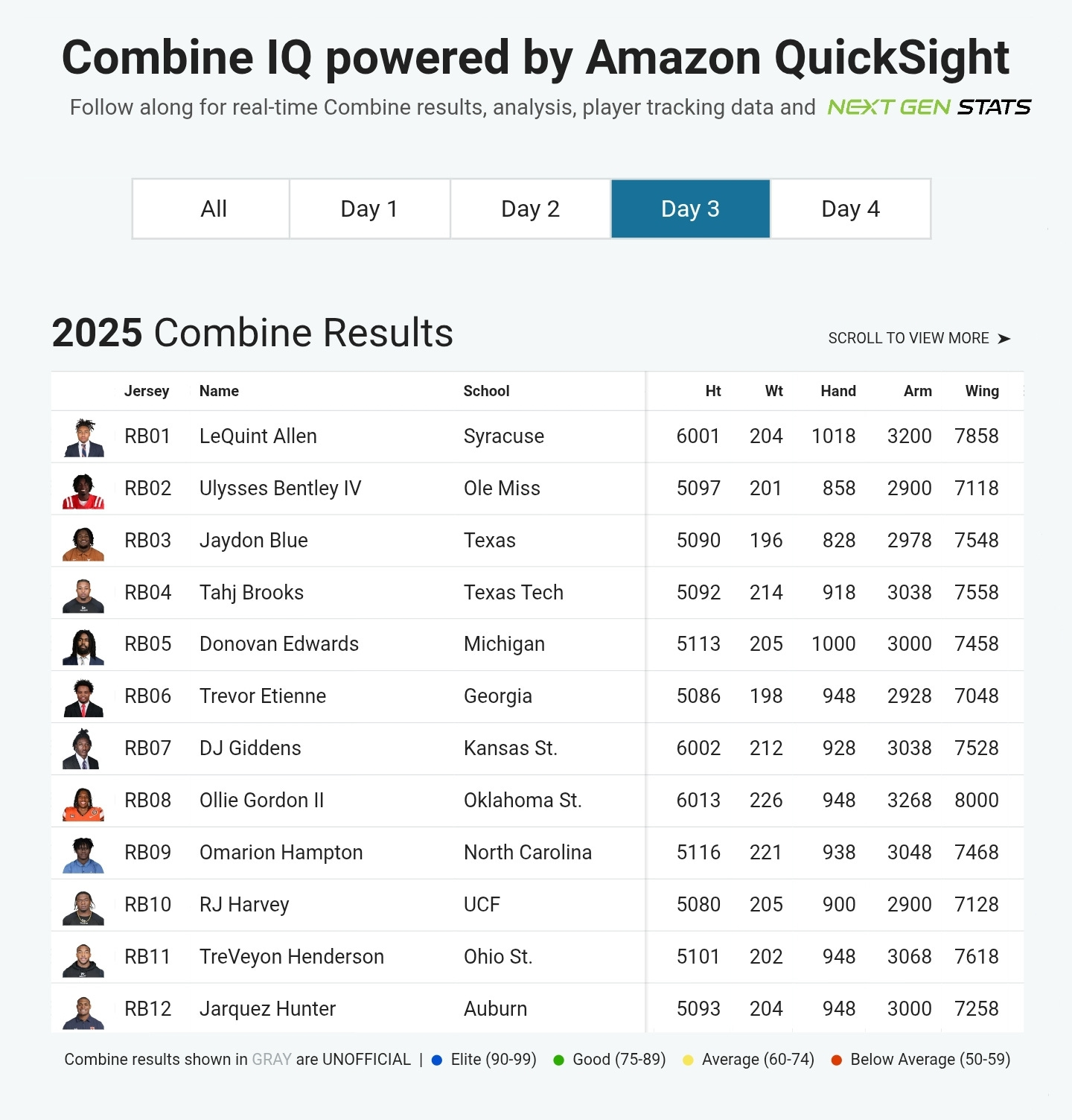Is Next Gen Stat's Combine IQ the Future of Pre-Draft Data Analysis?
NFL's Next Gen Stats released a new data suite, this time focusing on the NFL Draft Combine. What does it do and will it help?
The NFL’s release of its Combine IQ product represents one of a few recent steps the NFL has made towards democratizing access to data. And it could be the future of pre-draft data analysis.
The NFL has been famously resistant to opening up their tools for fans and analysts to produce independent insight — it was a slog to get the NFL to provide access to All-22, or “coaches’ film” to fans years ago and there hadn’t been much more progress until the introduction of Next Gen Stats.
Even so, granular data was difficult to come by as the NGS team developed new metrics using chip data provided by Zebra Technologies.
We had some game-to-game information with developments like “rush yards over expected” and “completion probability” that enriched the conversation, but nothing that was as detailed as what boutique data services like Pro Football Focus, MathBomb, Sports Info Solutions or Sumer Sports have sold to enterprise customers or even casual consumers. That changed in a big way with the release of their NFL+ product and NFL Pro.
NFL Pro, part of the NFL+ package, carries some similarities to PFF Ultimate’s product, allowing users to filter situation and context to see individual plays, marrying the film product that had previously been a nightmare to navigate with a data suite.
Before the introduction of NFL Pro, the film package (GamePass) with All-22 footage had regressed since its introduction, with a now-buggy player, poor play-by-play integration and little user control over its features.
NFL Pro’s player was itself a significant upgrade over the GamePass player, but paired with the Next Gen Stats data and ability to create play-by-play playlists of videos, it represented an epoch-changing leap for easily accessible analysis tools.
Through NFL Pro you could find out that, in 2024, Sam Darnold led the league in deep passing attempt EPA per dropback, with the third-lowest deep ball tight-window throw percentage, at 21.7 percent.
His average receiver separation was 2.7 yards per throw (second-highest) and he was blitzed at a 33 percent rate (8th-most) on those deep balls. And to confirm any of that, you can click on those dropbacks to see on film all deep ball passing attempts from Darnold in 2024.
If one wanted to only see the dropbacks where he threw a deep ball against a blitz (20 plays), one could do that. If one wanted to see the dropbacks where he threw a deep ball against a blitz on third down (five plays), one could do that. If one only wanted to look at incompletions in those situations (two plays), one could do that, and so on.
Spearheading this charge has been Mike Band, the Senior Manager of Next Gen Stats Research and Analytics. Before joining Next Gen Stats, Band was a former scouting assistant with the Minnesota Vikings and later an analytics firm that consulted with the team. Notably, Band played a role in the Vikings’ historic 2015 draft class.
Keep reading with a 7-day free trial
Subscribe to Wide Left to keep reading this post and get 7 days of free access to the full post archives.




